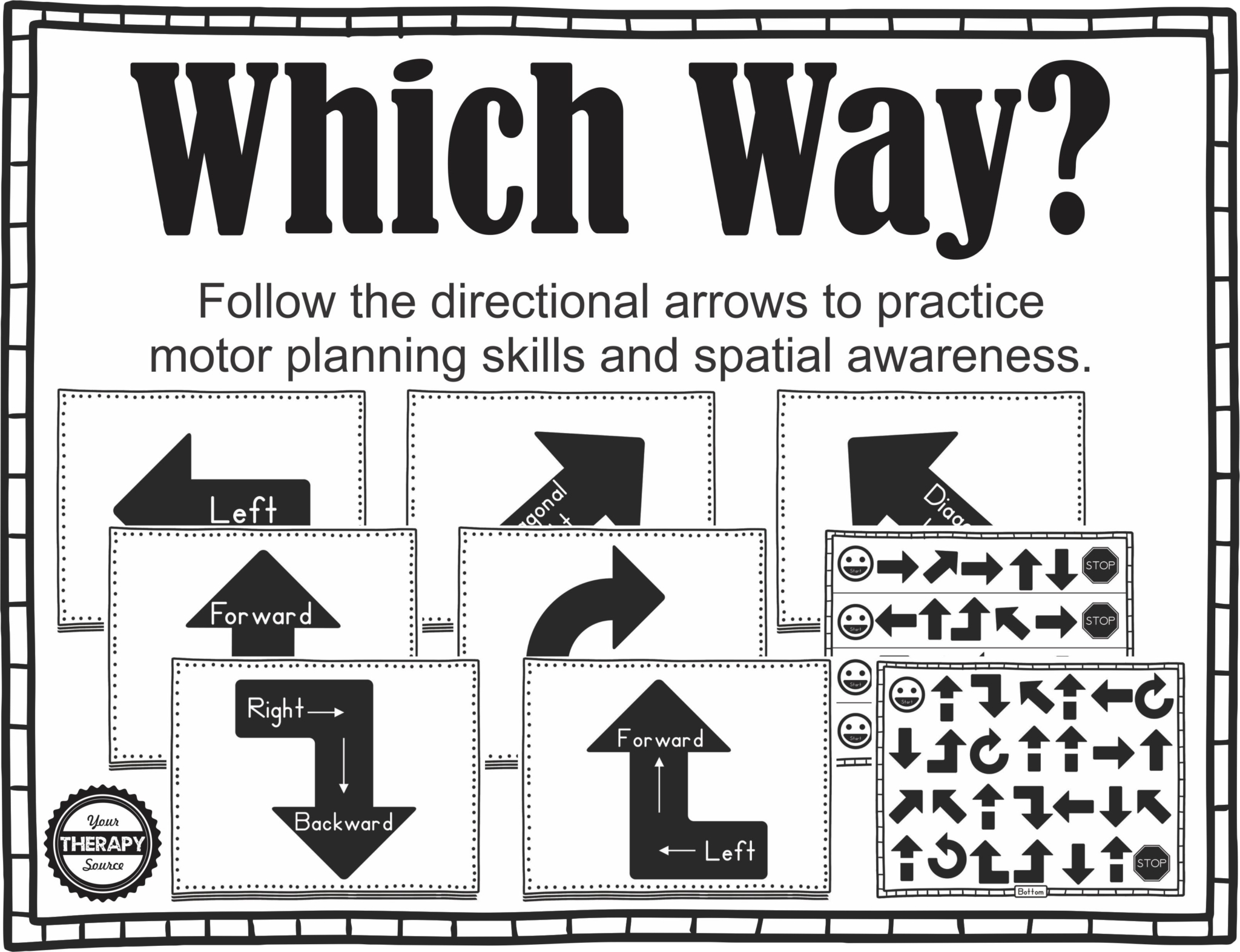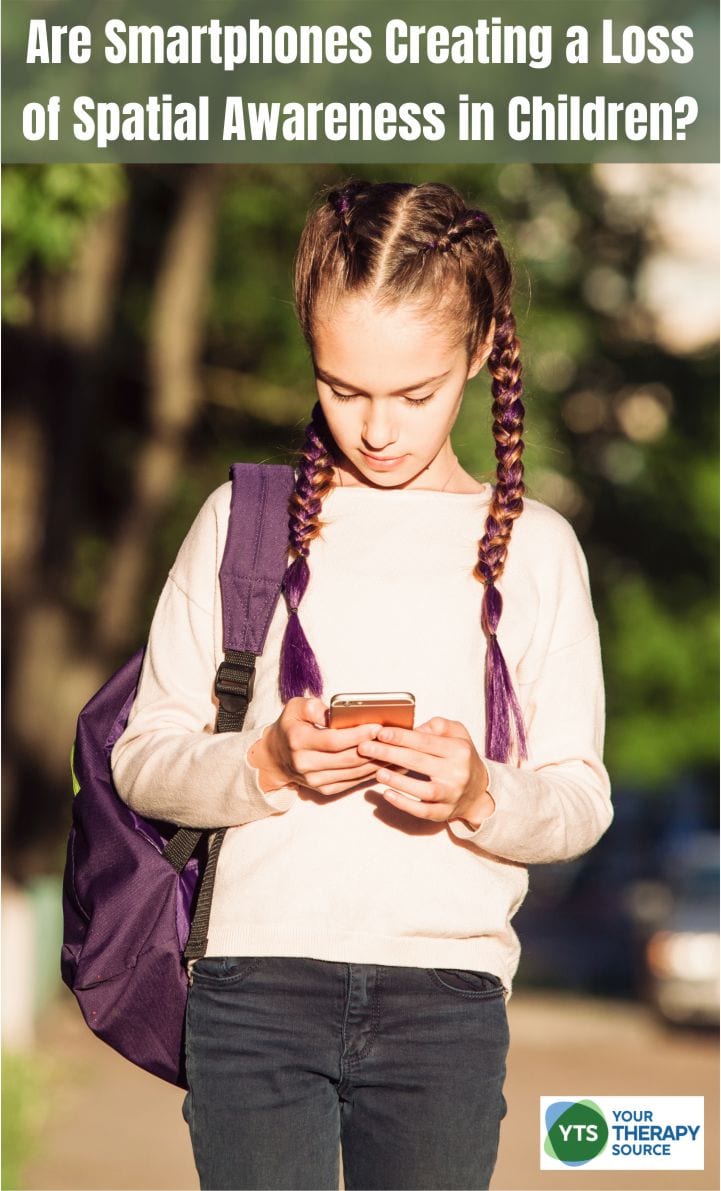Is There a Loss of Spatial Awareness in Children?

Are Smartphones Creating a Loss of Spatial Awareness in Children?
How Can Smartphones Create a Loss of Spatial Awareness in Children?
There is no research yet to back these hypotheses, but here are topics to ponder regarding the potential effects of smartphone use and spatial awareness in children. Association does not mean causation and this blog post is opinion/speculation:
Focus and Attention is on the Smartphone and Not Their Surroundings
When children are constantly looking down at their smartphones, they are not observing their surroundings. They can not see what is next to them, behind them, to the right and to the left. App developers have done an excellent job of sucking our attention into video games, social media, and video clips. It can be hard for adults to pick their head up, so can you imagine a developing brain?
How about the visual-spatial skills of teenagers and smartphone use? According to Safe Kids, every hour in the United States a pedestrian teenager is injured or killed after being hit by a car. Teenagers who have been hit or nearly hit, report that they cross the street listening to music, texting, or talking on the phone.
Voice Activated Directions and Body Awareness
Many of us use GPS to get from here to there. When we follow the audio directions, “turn left here” or “take exit 9” we are not looking at a map we are simply following verbal directions. Looking at the map helps us to relate where we are and we are going. It gives us visual-spatial awareness of our surroundings. I can visually see that at the next block I am taking a left versus just waiting to be told to do it.
The Vestibular Ocular Reflex and Phone Use
The vestibular ocular reflex helps us to maintain the orientation of the eyes in space during head movements so that we can keep visual images within our focus. In simple terms, it is necessary to stabilize our vision. Children today often ride in cars while on their smartphones. Short rides, long rides, whatever the case, children are often head down, eyes focused on the phone. When we never pick our head up to look out the window to let the body know we are sitting in one place but actually moving forward, our vestibular ocular reflex can be affected. This can result in feelings of nausea and deficits in balance.
Developing Peripheral Vision
Think of how hyperfocused you can get when you look at your phone. Sometimes it can literally feel like no one is around you and you tune out people talking to you. We are not focused at all on our peripheral vision. Research indicates that peripheral vision may continue to develop into the teen years.
When you process what you are viewing in your periphery, your spatial awareness increases. If children are constantly focused on their cell phones, do they experience deficits in peripheral vision and spatial awareness?
Development of the Vestibular System and Loss of Spatial Awareness
The vestibular system is a set of sensory organs in the inner ear that link to the brain and spinal cord. It helps us to detect motion and gravity. In addition, the vestibular system initiates movements to maintain balance and orientation. This system is crucial in providing us with information about where we are in space.
Excessive cell phone use has been associated with decreased physical activity. When we do not move we can not develop our vestibular system to help provide us with information regarding spatial awareness.
Lack of Play and Cell Phone Use
How Can We Help Children Prevent a Loss of Spatial Awareness?
Reduce Excessive Screen Time in Children
The most important step is to follow the American Academy of Pediatrics recommendations for screen time in children. This will allow more time for play and active exploration of the environment to develop spatial awareness. The recommendations are as follows:
- For children younger than 18 months, avoid the use of screen media other than video-chatting.
- Parents of children 18 to 24 months of age who want to introduce digital media should choose high-quality programming, and watch it with their children to help them understand what they’re seeing.
- For children ages 2 to 5 years, limit screen use to 1 hour per day of high-quality programs. Parents should co-view media with children to help them understand what they are seeing and apply it to the world around them.
- For children ages 6 and older, place consistent limits on the time spent using media, and the types of media, and make sure media does not take the place of adequate sleep, physical activity and other behaviors essential to health.
Provide Activities to Encourage Spatial Awareness
Here are several ideas to prevent a loss of spatial awareness in children:
- Go to the playground.
- Complete obstacle courses.
- Take walks and hikes outdoors where the environment is constantly changing.
- Play games like tag where children have to run around each other and objects.
- Use Legos, blocks, and puzzles. Try Tangam puzzles. Try this free visual spatial puzzle crossing paths. Research has shown that parents who participated in guided block play with their children had significantly higher proportions of spatial talk. Guided block play consisted of playing with the blocks along with guided instructions for how to build different structures. Read more in a previous blog post on block play and spatial awareness.
- Practice completing patterns. You could try Follow the Path or Patterns, Patterns, Patterns.
- Movement Games: Participate in any type of movement games where children have to move around obstacles or friends. The ability to move around stationary objects is quite different than around moving objects which are unpredictable. If you need ideas, try 50 Sensory Motor Activities for Kids! Check out Which Way? to challenge motor planning and spatial awareness.
- Play games that require children to learn right and left discrimination. Try the Right or Left Games to practice.
Additional Resource for Learning About Spatial Awareness
Personal Space Journey is a collection of activities to teach children about personal space. You can choose how to utilize the materials. Some children may benefit from reading the story first with follow up. Others may need to work on body awareness activities in order to maintain personal space.
This collection includes the following:
- Personal Space Journey Board Game
- 24 Body Cards – the child has to make his/her body look exactly like the body on the card
- 24 Challenge Cards – complete the body awareness and motor planning challenges written on each card
- 16 Movement Cards – complete the movement cards to practice body awareness moving through space
- Body in Motion Challenges Worksheet – try to complete the 16 motor skills moving your body in different ways
- Self Portrait – practice drawing a self-portrait and remember to include many body parts
- Color the Body – identify and color in various body parts
- Personal Space Journey Letter for Home – letter written to parents about developing body awareness
- Personal Space and School – a 12-page social story about maintaining personal space in school
- “I Can” Statement Posters to complement the Personal Space social story – 12 “I Can” posters to hang throughout the school to reinforce the personal space journey
- Twelve Small cards of the “I Can” Statements – provide the child with these small cards to remind them to maintain personal space in different situations – i.e. tape to a desk, slip in a notebook, etc.
- Personal Space Journey Certificate – complete this certificate when child has mastered maintaining personal space
- Handwriting Practice – 8 pages of handwriting practice for the child to list ways to maintain personal space in different situations. Provided in dotted line format, double line format (Handwriting Without Tears® style) and regular lined paper.
The activities are reproducible to use over and over again with all the children that you teach. FIND OUT MORE.






